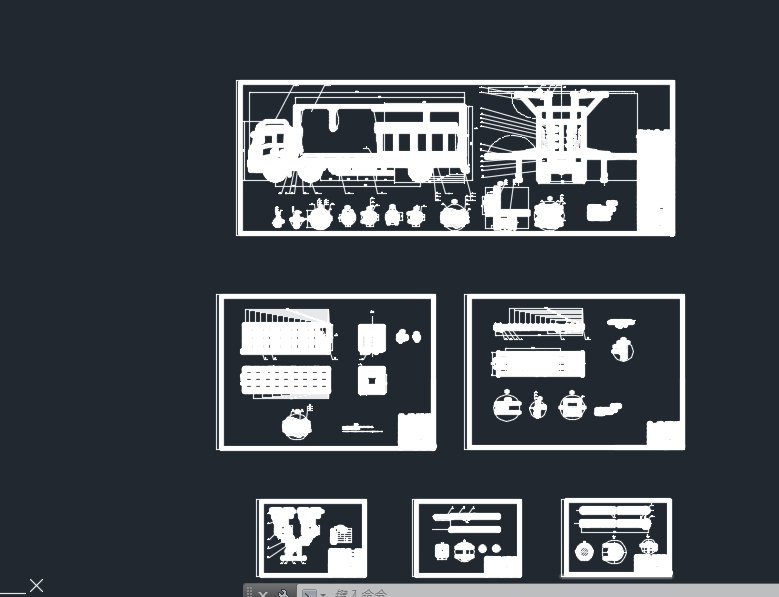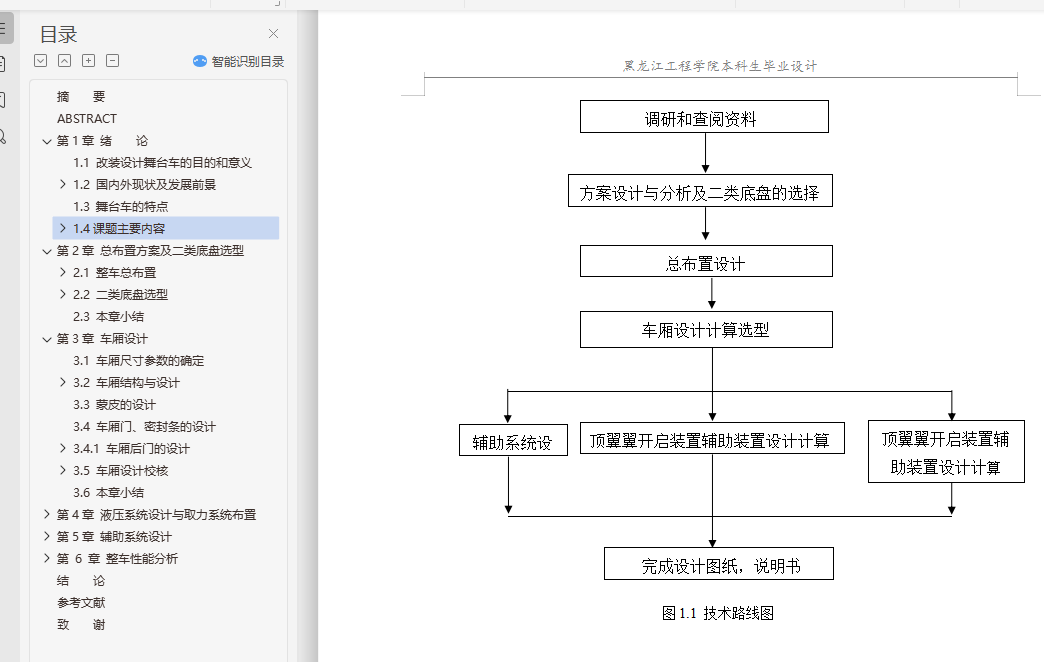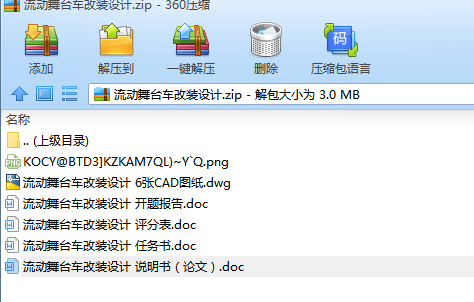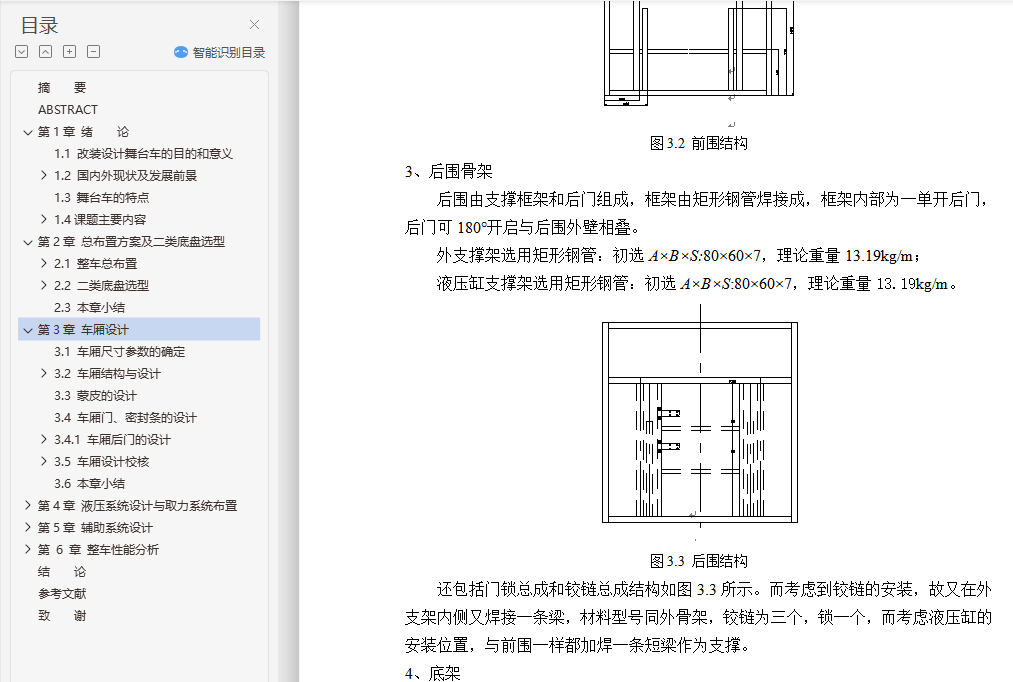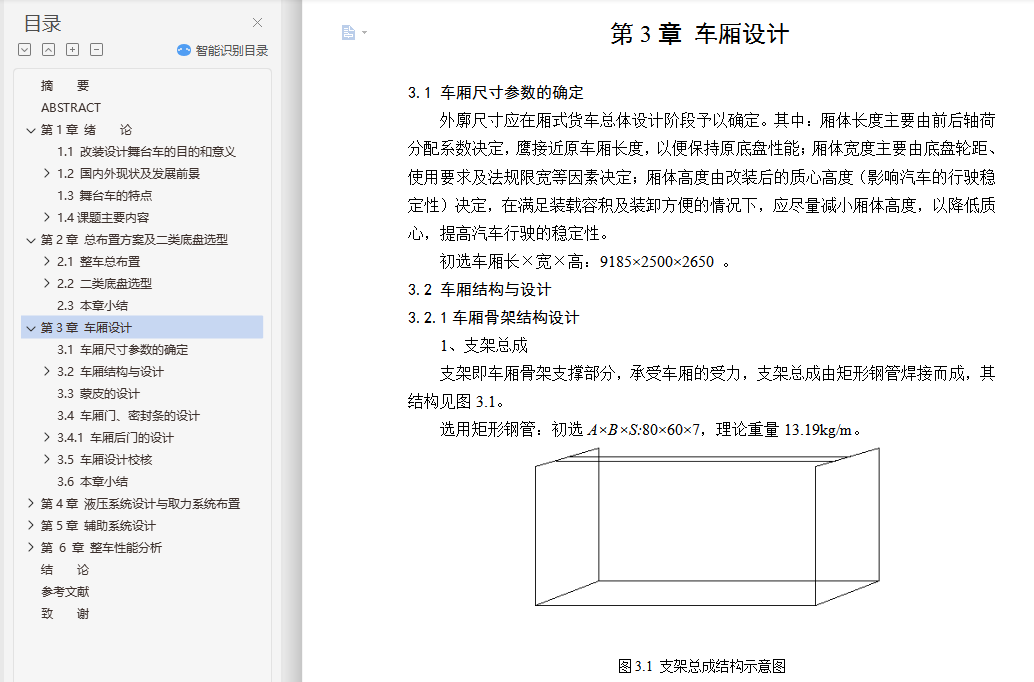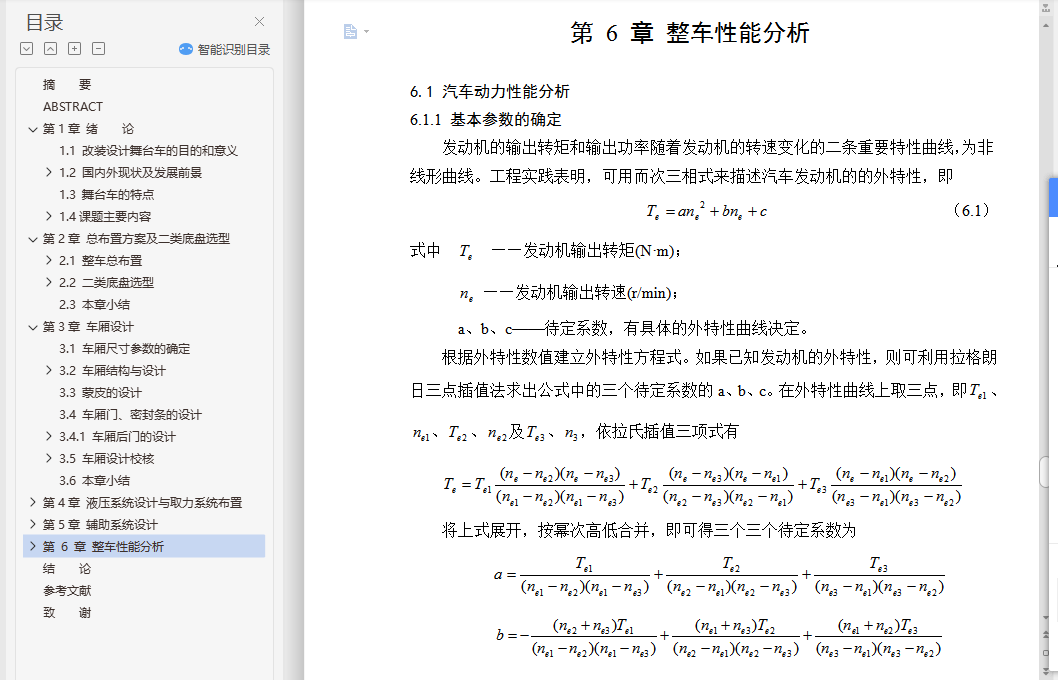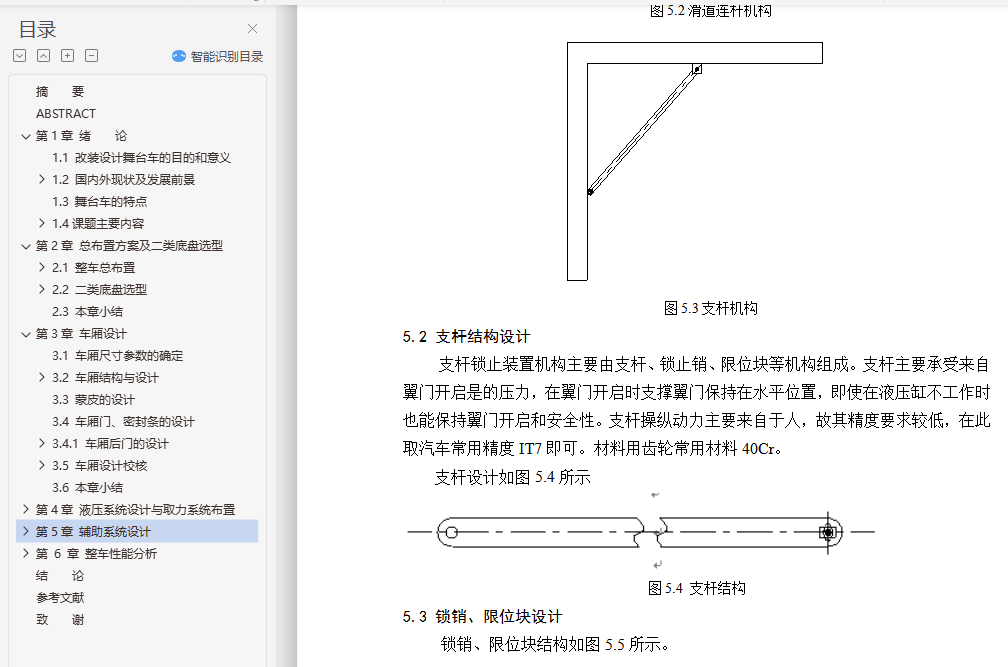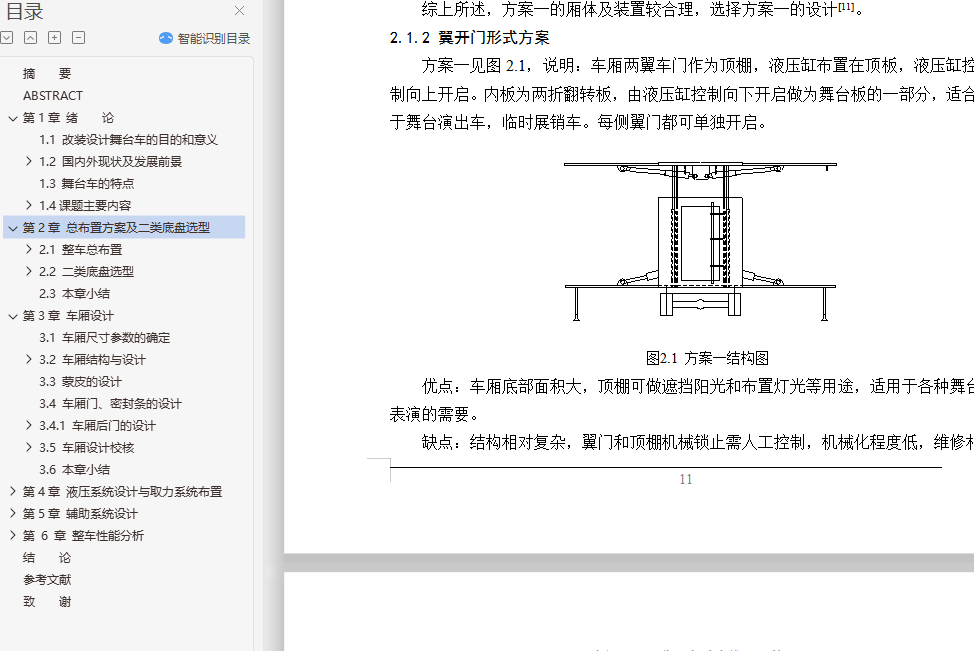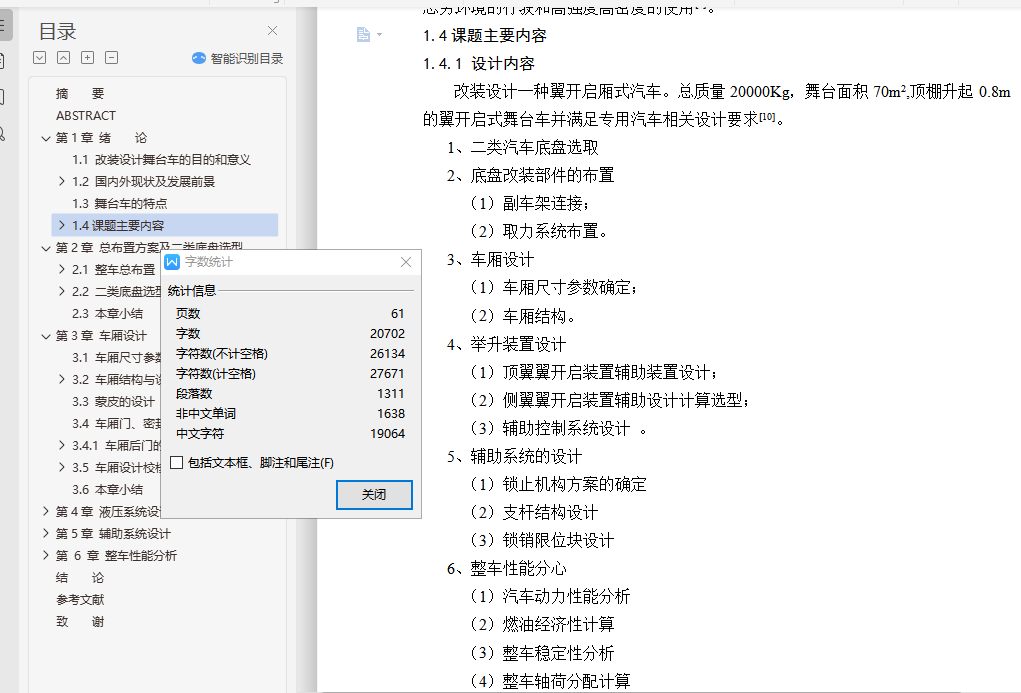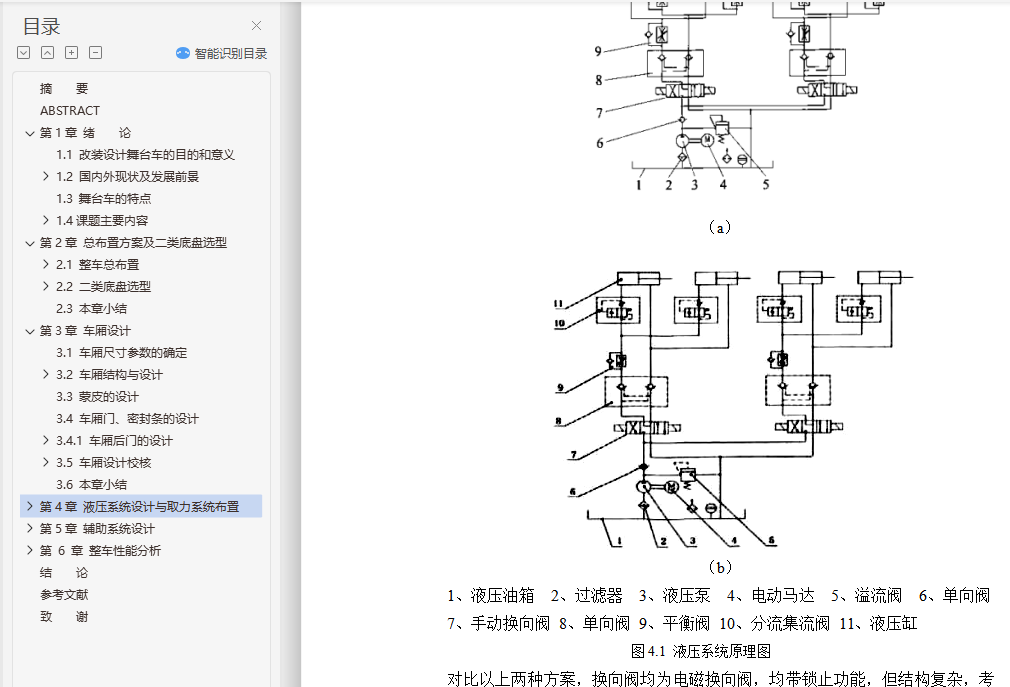摘 要
翼开启式舞台车是一种能适应现代物流发展需要的新型运输车型,将会有广阔的市场前景。其最主要特点是装卸效率高。目前,已有很多专用车厂家生产这种车型,翼开启厢式汽车的推广可大大弥补普通厢式车装卸效率低的不足,缩短工作周期,降低运输成本,对国民经济的发展有着重要的意义。
文中介绍了总质量为20t的翼开启厢式汽车的改装设计说明。对车厢、翼开门、翼门作业机构、翼门机械锁止机构、液压系统和取力系统进行了详细设计,并对不同方案进行了比较分析,保证了翼开启厢式汽车的先进性及实用性,对车厢底架和顶架支撑梁进行实体建模和ANSYS分析,确保设计合理。叙述了在改装翼开启厢式汽车过程中容易出现的问题及相关专用设备的工作原理,并对整车性能进行了分析。
关键词:专用汽车;翼开启厢式汽车;车厢;专用汽车改装设计;ANSYS
ABSTRACT
The wings open stage car is a new transport models, adapted to the needs of the development of modern logistics will have broad market prospects. Its most notable feature of the efficient loading and unloading. At present, there are special vehicle manufacturers to promote this model, the wing open railroad car can greatly compensate for the deficiencies of the ordinary van loading and unloading efficiency, shorten cycle times and lower transportation costs, the development of the national economy has an important significance.
This paper introduces a description of the total mass of 20t wing open railroad car design modifications. Compartment, open the door wing, wing doors, operational agencies, the mechanical locking mechanism of the wing doors, hydraulic systems and power take off system, a detailed design, different programs and a comparative analysis to ensure that the wing open railroad car of advanced and practical , carriage chassis and top shelf support beam for solid modeling and ANSYS analysis to ensure that the design is reasonable. Describes the working principle of the modified wing open railroad car prone to problems and related equipment, and vehicle performance analysis.
Key words: Special Vehicle Design;Wing Opening Box Van;Car;Design Modifications;ANSYS
目 录
摘要 I
Abstract II
第1章 绪论 1
1.1 改装设计舞台车的目的和意义 1
1.2 国内外现状及发展前景 1
1.2.1 国内外发展现状 1
1.2.2 舞台车的发展前景 3
1.3 舞台车的特点 3
1.4课题主要内容 4
1.4.1 设计内容 4
1.4.2 技术路线 4
第2章 总布置方案及二类底盘选型 6
2.1 整车总布置 6
2.1.1 厢体装置方案 6
2.1.2 翼开门形式方案 7
2.1.3 方案分析与选择 9
2.2 二类底盘选型 9
2.2.1 二类底盘选择方案 9
2.2.2 二类底盘初选 16
2.2.3 所选底盘具体参数 16
2.3 本章小结 16
第3章 车厢设计 17
3.1 车厢尺寸参数的确定 17
3.2 车厢结构与设计 17
3.2.1车厢骨架结构设计 17
3.2.2副车架设计 19
3.3 蒙皮的设计 24
3.4 车厢门、密封条的设计 25
3.4.1 车厢后门的设计 25
3.4.2 密封条的设计 25
3.5 车厢设计校核 25
3.5.1车厢质量 26
3.5.2 使用ANSYS10.0对车厢底架静态分析 26
3.6 本章小结 32
第4章 液压系统设计与取力系统布置 33
4.1 液压控制系统设计 33
4.1.1 工作原理 33
4.1.2 液压系统原理布置 33
4.2 液压缸选型 35
4.3 液压泵及液压控制阀的选择 36
4.4 取力器选型 36
4.5液压、取力系统布置及安装 38
4.5.1 液压泵固定安装 38
4.5.2 液压缸安装 38
4.5.3 取力器与液压泵连接 38
4.6本章小结 39
第5章 辅助系统设计 40
5.1 锁止机构方案确定 40
5.2 支杆结构设计 41
5.3 锁销、限位块设计 41
5.4 本章小结 42
第6章 整车性能分析 43
6.1 汽车动力性能分析 43
6.1.1 基本参数的确定 43
6.1.2 汽车的行驶方程式 44
6.1.3 汽车动力性能计算 47
6.2 燃油经济性计算 49
6.3 整车稳定性分析 50
6.3.1 空载质心高度的计算 50
6.3.2 空载侧倾角的计算 50
6.4 整车轴荷分配计算 51
6.5 本章小结 52
结论 53
参考文献 54
致谢 56
